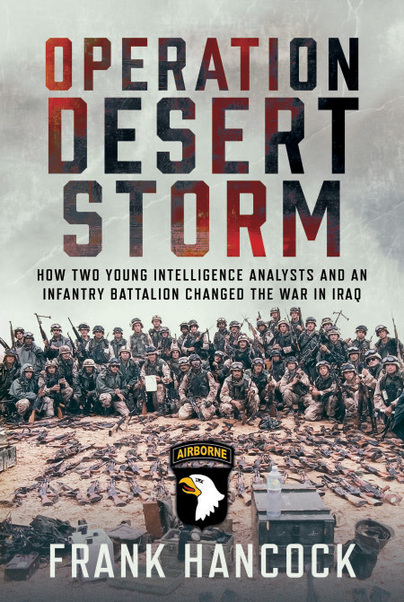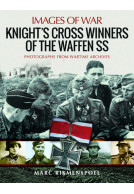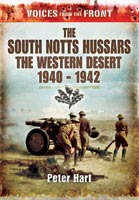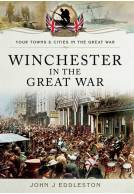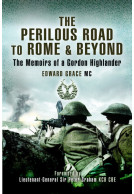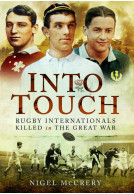Operation Desert Storm (Hardback)
How Two Young Intelligence Analysts and an Infantry Battalion Changed the War in Iraq
Imprint: Pen & Sword Military
Pages: 256
Illustrations: 50 mono illustrations
ISBN: 9781036130435
Published: 2nd September 2025
(click here for international delivery rates)
Order within the next 11 hours, 42 minutes to get your order processed the next working day!
Need a currency converter? Check XE.com for live rates
“During Desert Storm the Air Force and the Armor forces were the thunder but the 101st was the lightning.” General Norman Schwarzkopf, April, 1991. Camp Eagle II, Saudi Arabia
Operation Desert Storm chronicles perhaps the most incredible story of the Gulf War that has never been told. It describes two young soldiers from the intelligence section of 1-327 Infantry, 101st Airborne Division, Captain Jose Delgado and Sergeant Jesus Gonzalez, who unlocked an intelligence puzzle none of their higher headquarters recognized. This pivotal discovery occurred after the finalization of the 101st Airborne’s plans for attacking into Iraq and altered the direction of Desert Storm.
1-327 Infantry was also the lead unit of what became the largest air assault (by helicopter) in US history. The 101st Airborne was a unique army division because of the 300+ helicopters in its arsenal. General Schwarzkopf's "Hail Mary" plan, to use the 101st to air assault deep into Iraq and cut the Euphrates Valley, was the boldest operational maneuver for the US Military since the Inchon landing in Korea in 1950. Schwarzkopf's plan stretched the division’s capabilities to their limits and demonstrated the 101st Airborne’s strengths and weaknesses. CPT Jose Delgado and SGT Jesus Gonzalez discovered the fatal intelligence flaw, an enemy battalion’s bunker-trench complex in 1-327 Infantry’s lead company's landing zone. Their discovery, 48 hours before the air assault, caused the division's plan to be altered, although it was a significant challenge to do so. Without their discovery, the attack was destined for disaster.
In writing the book, Colonel Frank Hancock, Battalion Commander of 1-327 Infantry, asked soldiers from across the battalion to provide narratives and their recollections of what happened, thereby providing a full view of what occurred and why, from the perspective of soldiers ranging in rank from private to colonel. The book also details the process of how the US Army learned from its experiences in Vietnam, made changes, and became a different, structured, and more lethal army in the post-Vietnam era.
Colonel Frank Hancock served as the commander of the 1st Battalion 327 Infantry, 101st Airborne Division (Air Assault) during Operation Desert Shield/Desert Storm. In this book, Operation Desert Storm: How Two Young Intelligence Analysts and an Infantry Battalion Changes the War in Iraq, he provides an excellent examination of one infantry battalion’s experiences preparing for combat, experiencing the reality of battle, and returning home. This book is a must read for anyone who seeks a Soldier’s view of Desert Shield/Desert Storm.
LTC (R) Edwin "Mike" Perry - Former Director, U.S. Army Military History Institute and past President of the Army Heritage Center Foundation.
COL Hancock breaks the book down into four main components. He first highlights what he saw as an Army struggling in the aftermath of the Vietnam War after he was commissioned as a 2nd Lieutenant in June 1972. He highlights what he saw as the critical developments within the Army during the 1970s and 1980s. Those developments created the lethal force that fought during Operations Desert Shield/Desert Storm.
Then he focuses on the specific of his unit, the 101st Airborne Division (Air Assault). He highlights its development post-Vietnam and its capabilities. He focuses on how the division’s helicopter assets allowed its subordinate units to quickly and precisely, insert men and equipment to various parts of the battlefield while ensuring that they had the equipment and the lethality to complete their mission.
In the third section the book the reader finds the special aspect of the book begins. this begins when COL Hancock assumed command of the 1st Battalion 327 Infantry, 101st Airborne Division (Air Assault) in June 1990. Beginning with Chapter 3, 1st Battalion 327 Infantry, his voice no longer dominates the unit’s experiences. He draws from 33 other Soldiers and one civilian their recollections of events to weave a narrative of the battalion’s experiences. This is the special aspect of this book for COL Hancock’s approach provides a multilayered narrative of Desert Shield/Desert Storm that captures the individual concerns and experiences of Soldiers faced with combat for the first time in a generation.
However, the work is much more than an intimate look at a unit preparing for and entering combat. Hancock provide a leadership study on how he and the Soldiers of the battalion developed into a team and how the trust and confidence they had in each other amplified their ability to meet the challenges of the war.
Why is the book a leadership study? FM 9-4, Air Assault Operations, March 1987, highlights that the most dangerous time of an air assault operation is when the unit approaches and touches down on its landing zone. Hancock provides special notice how his two young intelligence analysts may have changed the course of the war. The intelligence estimates of their higher headquarters indicated that a trench line near the 327th landing zone was unoccupied. They disagree and using their technical skills and trusting that the leadership of the battalion would listen and act allowed them to contest the brigade and divisions evaluations. Ultimately, their efforts caused their higher headquarters to alter their unit’s landing zone on day one of Operation Desert Storm avoiding a well-entrenched and armed Iraqi battalion. They saved a considerable number of Soldiers and may have changes the course of the initial stages of the war.
The final sections of the book examine the unit’s return to Fort Campbell and their reception when arriving home. COL Hancock has special praise for Linda Patterson who adopted the Battalion during the Vietnam War when her brother was killed in action. He then highlights the challenges of again preparing his unit for a rotation at the Joint Readiness Training Center while recognizing that many of his Soldiers and their families had already experienced significant separation How do you maintain the appropriate balance between readiness and family in a volunteer Army?. He then concludes with a concluding chapter summarizing what he saw as the three key lessons he wishes to pass on to others.
It was very well written and told the story in such a manner that the events are easily followed, the situation and tactics understood, and the personal experiences of the men and the units who contributed so greatly to the Desert Storm’s strategic, operational, and tactical success are fully appreciated.
Gregory A. Brockman COL US Army (Retired)
It was one of the most accurate, insightful recounting of a significant combat event that I have ever read – and one dearly needing to be told for Desert Storm.
It not only told a riveting story that many do not know, but it explains the story in a manner revealing the inner workings of a combat unit and its heroes, their intense desire to take care of their troops while achieving mission success, and the tactics that achieved these goals.
I whole-heartedly recommend this book!!!
Article as featured in
Infantry Magazine
Creating a Book Cover for Operation Desert Storm by Tom Guleff, from the author's unit.
About Col Frank Hancock
Colonel (Ret) Frank Hancock was the Battalion Commander of 1-327 Infantry, a 700-man battalion in the 101st Airborne Division (Air Assault) during Operation Desert Shield/Desert Storm (1990/91). In 1993, after finishing his battalion command with the 101st Airborne, he published a Strategic Research Paper as a student at the US Army War College. Titled “North to The Euphrates, Part One: The Taking of FOB Cobra,” this report provides much of the operational framework of the unit’s mission in the Gulf War and the all-important first day of the ground attack into Iraq. The basis for his research paper is also the operational basis for the book and provides the source document thirty years later.







